The typical American’s diet relies on dairy products for 70% of its calcium intake. However, just eating a food containing calcium does not mean that it ends up contributing to healthy bones. You can get enough calcium without consuming dairy products.
One cup of cow’s milk contains approximately 300 mg of calcium. However, your body’s ability to absorb such calcium may be limited because the body often needs to bring calcium into the blood to balance the excess phosphorous that is also in cow’s milk. Apart from the fact that many individuals react to lactose and proteins in dairy products, milk also has a poor calcium-to-magnesium ratio.
The approximate calcium content per 8 oz (1 cup) serving is:
Dark green leafy vegetables
cooked spinach 250
cooked collards 300
cooked bok choy 330
cooked turnip greens 450
cooked kale 200
parsley 200
cooked mustard greens 180
dandelion greens 150
romaine lettuce 40
head lettuce 10
Beans and Peas
tofu 150
navy beans 140
soybeans 130
pinto beans 100
garbanzo beans 95
lima, black beans 60
lentils 50
split peas 20
Seafood
raw oysters 240
shrimp 300
salmon with bones 490
mackerel with bones 600
sardines with bones 1,000
Sea vegetables (seaweed)
nori 1,200
kombu 2,100
wakame 3,500
agar-agar 1,000
Sprouts
soy 50
mung 35
alfalfa 25
Grains
tapioca (dried) 300
brown rice, cooked 20
quinoa, cooked 80
corn meal, whole grain 50
rye flour, dark 40
oats 40
tortillas (2) 120
whole wheat flour 50
Seeds
almonds 750
hazelnuts (filbert) 450
walnuts 280
sesame seeds 2,100
sunflower seeds 260
The following herbs may provide significant, but variable, amounts of calcium:
borage, wild lettuce, burdock, lamb’s quarter, nettles, yellow dock
To further support the idea that milk is not the best source of calcium, a 1990 study compared the absorption of calcium from kale with the absorption from milk.1 The study revealed absorption of calcium from kale was 40.9%, compared with 32.1% from milk. As the table above suggests, many dark green leafy vegetables have relatively high calcium concentrations. The calcium in spinach is however, somewhat poorly absorbed, presumably because of the high concentration of oxalate. The study revealed that kale, a low oxalate vegetable, is a good source of bioavailable calcium. Kale is a member of the same family that includes broccoli, turnip greens, collard greens and mustard greens. These low-oxalate, calcium-rich vegetables are therefore also likely to be good sources of available calcium. In addition, milk is a contributing factor in the development of many allergic and autoimmune disorders. As a result, a safer source of dietary calcium is desirable for many people.
Concerns regarding kidney stones and bone spurs are best addressed by focusing on overall diet and selecting appropriate calcium sources rather than by simply reducing calcium intake. For many individuals with a tendency to form stones, bone spurs or otherwise misdirect calcium, calcium citrate may actually reduce such risks and enhance resorption of misplaced calcium and breakdown of stones and spurs. Ultimately, the most recent research2 shows that a diet low in animal protein and sodium, but with normal calcium levels, is more effective in preventing recurrence of calcium oxalate kidney stones than a diet low in calcium. Interestingly, higher levels of calcium from food may complex with dietary oxalates in the intestines and reduce their absorption.
It is also important to note that a high protein diet leads to an increased urinary calcium, and subsequent calcium loss. This is another reason that many individuals will benefit from a low fat, low animal protein diet. Coffee can also contribute to urinary calcium loss.
Importantly, without adequate vitamin D3 intake, calcium intake above 800 mg per day (in adults) cannot be utilized. Most people, especially in northern latitudes and particularly with cloudy winters, tend to be vitamin D deficient without proactive intake.
Citations for this section:
- Heaney RP, Weaver CM. Calcium absorption from kale. Am J Clin Nutr 1990; 51:656-657.
- Borghi L, Schianchi I, Meschi T, et al. Comparison of two diets for the prevention of recurrent stones in idiopathic hypercalciuria. N Engl J Med 2002; 346(2):7-84
Calcium Supplementation
If you are unable to obtain enough calcium from food alone, you would probably benefit from a calcium supplement. Take enough calcium to make up the difference you are receiving from your diet and the following table, depending on your age group. A formula combining calcium with magnesium and vitamin D3 usually provides a well-rounded approach for most individuals.
Life Stage / Calcium Recommendation
0-6 months old – 200 mg/day
6-12 months old – 260 mg/day
1-3 years old – 700 mg/day
4-8 years old – 1,000 mg/day
9-13 years old – 1,300 mg/day
14-18 years old – 1,300 mg/day
Life Stage / Calcium Recommendation
19-30 years old – 1,000 mg/day
31-50 years old – 1,000 mg/day
51-70 years old males – 1,000 mg/day
51-70 years old females – 1,200 mg/day
71+ years old – 1,200 mg/day
pregnant/lactating – 1,000 mg/day
The types of supplements include:
| FORM | ABOUT |
|---|---|
| Hydroxyapatite Crystals | MCHC includes bone-building cofactors in a form most similar to that used for bone formation; research indicates may be best form to improve bone mass; generally excellent absorption for most individuals, poor for some. Since MCHC is derived from animal sources make sure it is free from antibiotics, steroids, etc. |
| Calcium Citrate/Malate (aka calcium citramate) |
Less calcium per pill but higher rate of absorption usually allows for a lower daily dose than with carbonate. No known adverse effects. |
| Calcium Carbonate | Highest amount of calcium per pill but may cause intestinal gas and constipation and consequently be poorly absorbed by many individuals. |
| Calcium Citrate | Less calcium per pill but better absorbed than carbonate. No known adverse effects. |
| Calcium Phosphate | Already too much phosphorus in average diet so avoid this form. |
| Calcium Lactate | Lactate is usually derived from lactic acid. |
| Calcium Gluconate | Requires many pills to get any amount of calcium. |
| Dolomite, Bone Meal | May be contaminated with lead, as well as antibiotics, steroids, etc. Make sure that these concerns have been explicitly addressed in product labelling. |


